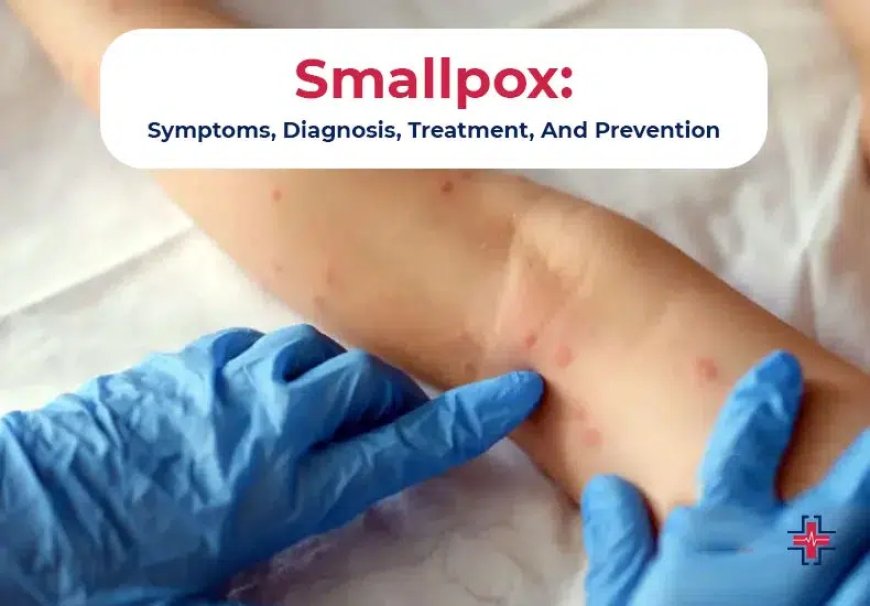The 10 Critical Smallpox Symptoms You Should Never Ignore

Introduction
Smallpox is a highly contagious and potentially deadly disease caused by the Variola virus. Though eradicated globally in 1980, it remains a significant concern due to bioterrorism threats. Recognizing smallpox symptoms early is crucial for timely medical intervention. This article will explore the ten critical symptoms, their progression, and how to differentiate smallpox from other illnesses.
What is Smallpox?
Smallpox was one of the most feared diseases in human history. The virus spreads through inhalation of respiratory droplets or direct contact with an infected person. Unlike chickenpox, smallpox has a unique rash pattern and more severe complications.
Types of Smallpox
There are two main types:
-
Variola major – The more severe and common form, with a high fatality rate.
-
Variola minor – A less severe form with a lower death rate.
10 Critical Smallpox Symptoms
1. High Fever (Over 101°F)
-
Fever spikes suddenly within 7-17 days after exposure.
-
Accompanied by chills and extreme fatigue.
2. Severe Headache and Body Pain
-
Intense headaches that do not subside with usual painkillers.
-
Muscle aches and back pain, making movement difficult.
3. Vomiting and Nausea
-
Some patients experience nausea and frequent vomiting.
-
Can lead to dehydration and weakness.
4. Extreme Fatigue and Weakness
-
Patients feel drained, making simple activities exhausting.
-
Can persist for weeks even after recovery.
5. Distinctive Rash Development
-
Starts as small red spots, usually in the mouth and throat.
-
Spreads to the face, arms, and legs within 24 hours.
6. Fluid-Filled Blisters
-
The rash turns into pus-filled blisters (pustules) within a few days.
-
Each blister is firm, round, and deeply embedded in the skin.
7. Lesions in Mouth and Throat
-
Develop before external skin rash appears.
-
Makes swallowing and breathing painful.
8. Scabbing and Crusting of Blisters
-
Pustules dry out after about 10 days.
-
Forms scabs that eventually fall off, leaving deep scars.
9. Severe Abdominal Pain
-
Caused by internal inflammation and fever.
-
Common in severe cases.
10. Bleeding and Multi-Organ Failure (Severe Cases)
-
Some cases lead to internal bleeding.
-
In fatal cases, multiple organ failure can occur.
How Smallpox Differs from Chickenpox
| Feature | Smallpox | Chickenpox |
|---|---|---|
| Rash Pattern | Starts on face, spreads outward | Starts on chest, spreads outward |
| Lesion Development | All lesions develop at the same time | Lesions appear in waves |
| Blister Characteristics | Deep-seated, firm blisters | Superficial, fluid-filled blisters |
How to Prevent Smallpox
-
Vaccination – The smallpox vaccine provides immunity for life.
-
Isolation of Infected Individuals – Prevents transmission.
-
Proper Hygiene – Washing hands and wearing masks in case of an outbreak.
Treatment and Recovery
There is no specific cure, but supportive treatments include:
-
Antiviral Medications – Some experimental drugs may help.
-
Fluids and Pain Relief – Helps manage symptoms.
-
Skin Care – Keeping the skin clean to prevent secondary infections.
ChatGPT said:
Frequently Asked Questions (FAQs)
1. Is smallpox still a threat today?
No, smallpox was eradicated in 1980. However, concerns about bioterrorism exist.
2. Can smallpox come back?
Not naturally, but accidental lab exposure or bioterrorism could reintroduce it.
3. How long does smallpox last?
It lasts around 4 weeks from onset to recovery.
4. Is there a cure for smallpox?
There is no specific cure, but vaccines and antiviral drugs can help manage outbreaks.
5. Can smallpox scars be removed?
Smallpox scars are permanent, but dermatological treatments like laser therapy can reduce their appearance.
For more blogs visit https://afriprime.net/blogs/94004/24-Hour-ER-Near-Me-Fast-Reliable-and-Expert-Emergency
What's Your Reaction?

































































